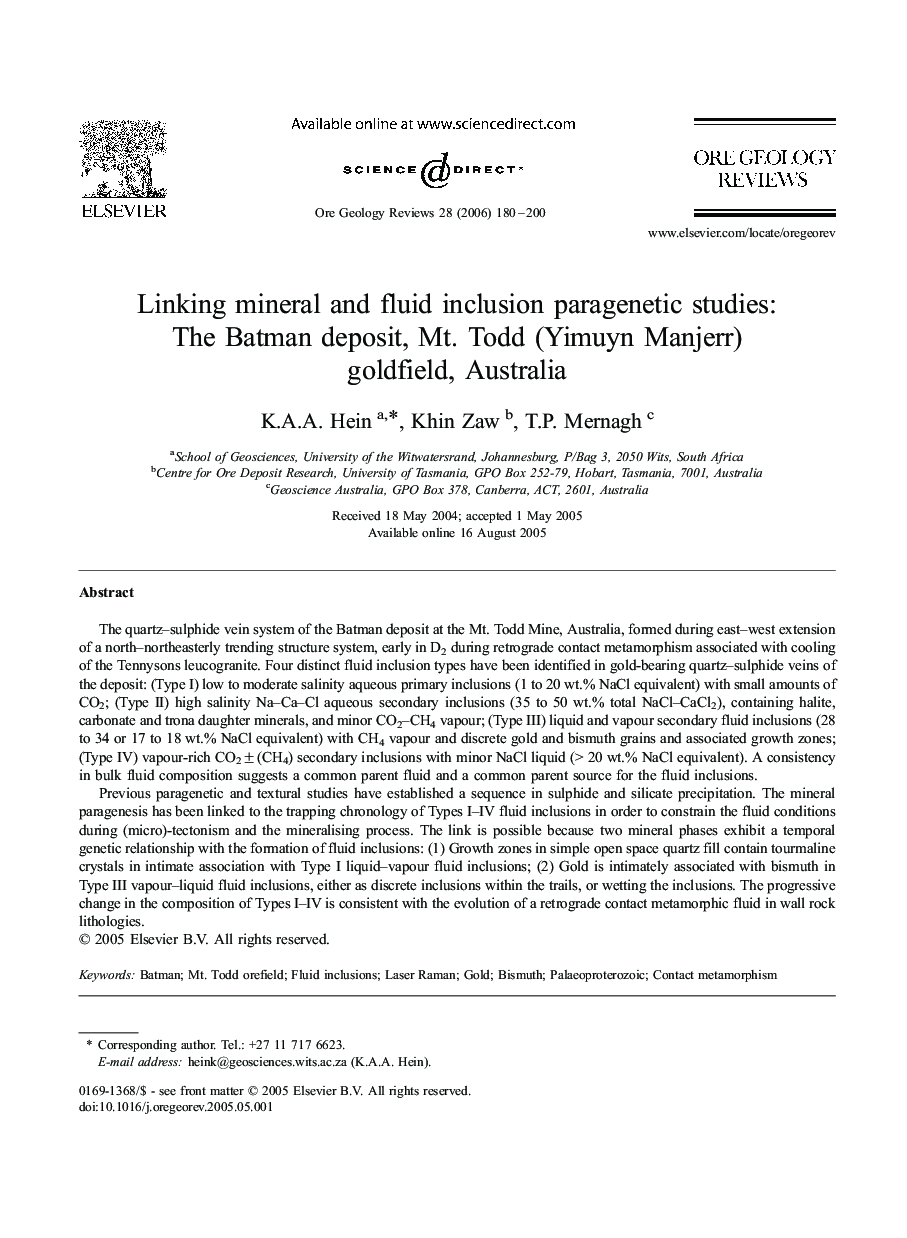| Article ID | Journal | Published Year | Pages | File Type |
|---|---|---|---|---|
| 4698056 | Ore Geology Reviews | 2006 | 21 Pages |
The quartz–sulphide vein system of the Batman deposit at the Mt. Todd Mine, Australia, formed during east–west extension of a north–northeasterly trending structure system, early in D2 during retrograde contact metamorphism associated with cooling of the Tennysons leucogranite. Four distinct fluid inclusion types have been identified in gold-bearing quartz–sulphide veins of the deposit: (Type I) low to moderate salinity aqueous primary inclusions (1 to 20 wt.% NaCl equivalent) with small amounts of CO2; (Type II) high salinity Na–Ca–Cl aqueous secondary inclusions (35 to 50 wt.% total NaCl–CaCl2), containing halite, carbonate and trona daughter minerals, and minor CO2–CH4 vapour; (Type III) liquid and vapour secondary fluid inclusions (28 to 34 or 17 to 18 wt.% NaCl equivalent) with CH4 vapour and discrete gold and bismuth grains and associated growth zones; (Type IV) vapour-rich CO2 ± (CH4) secondary inclusions with minor NaCl liquid (> 20 wt.% NaCl equivalent). A consistency in bulk fluid composition suggests a common parent fluid and a common parent source for the fluid inclusions.Previous paragenetic and textural studies have established a sequence in sulphide and silicate precipitation. The mineral paragenesis has been linked to the trapping chronology of Types I–IV fluid inclusions in order to constrain the fluid conditions during (micro)-tectonism and the mineralising process. The link is possible because two mineral phases exhibit a temporal genetic relationship with the formation of fluid inclusions: (1) Growth zones in simple open space quartz fill contain tourmaline crystals in intimate association with Type I liquid–vapour fluid inclusions; (2) Gold is intimately associated with bismuth in Type III vapour–liquid fluid inclusions, either as discrete inclusions within the trails, or wetting the inclusions. The progressive change in the composition of Types I–IV is consistent with the evolution of a retrograde contact metamorphic fluid in wall rock lithologies.
